- Feature packed interior
- Real world range of 300km
- New infotainment screen
- Not the cheapest
- Tight rear headroom
- Using AC drops the range
Electric cars in Australia can be a bit of a tricky subject in Australia. Unlike other many countries, our government doesn’t offer subsidies to buy them, which makes them cost significantly more to buy than regular cars. Hyundai has recently released the 2020 Hyundai Ioniq Electric, which reminds us that an electric car that doesn’t have to cost twice as much as a normal car, and nor does it look or feel like a science experiment. We tested the Ioniq to see what life with an electric car is like in 2020.
Price & Specs: 8.0/10
The 2020 Hyundai Ioniq Electric range starts off at $48,970 plus on-road costs for the base Elite, which is equipped with features such as 16-inch alloy wheels, a large 10.25-inch touch screen with Apple CarPlay and Android Auto, satellite navigation, an eight-speaker Infinity sound system, digital radio, keyless entry with push button start and auto lights and wipers.
We tested the top-spec 2020 Hyundai Ioniq Electric Premium which costs $53,010. The $4,040 premium to the, uh, Premium gets you front parking sensors, LED headlights, leather upholstery, a sunroof, wireless phone charging, heated and cooled front seats, a heated steering wheel and an electric driver’s seat with two person memory functionality. In our opinion, spending this extra $ is necessary as it makes the Ioniq feel more special and is better value than the Elite.
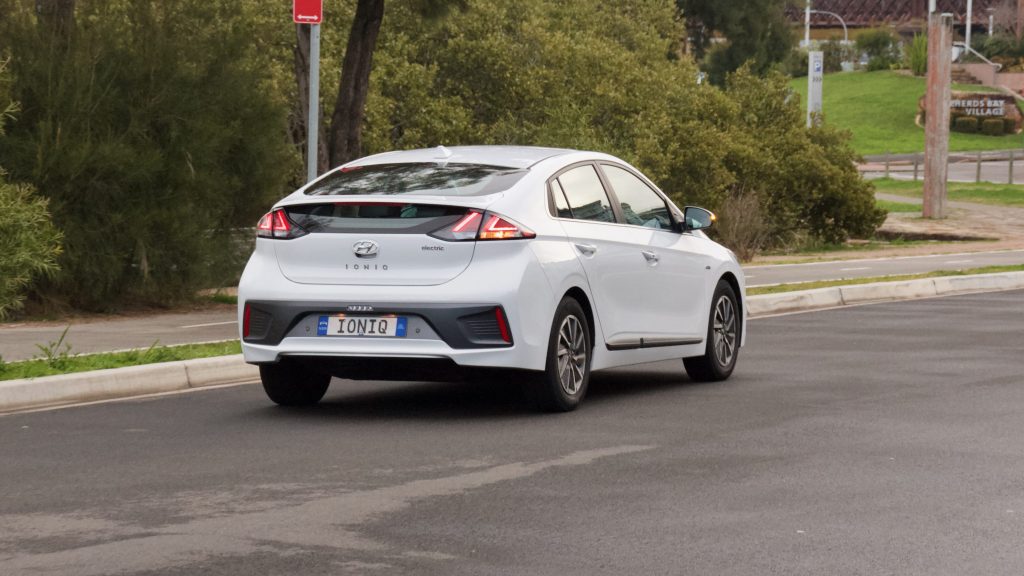
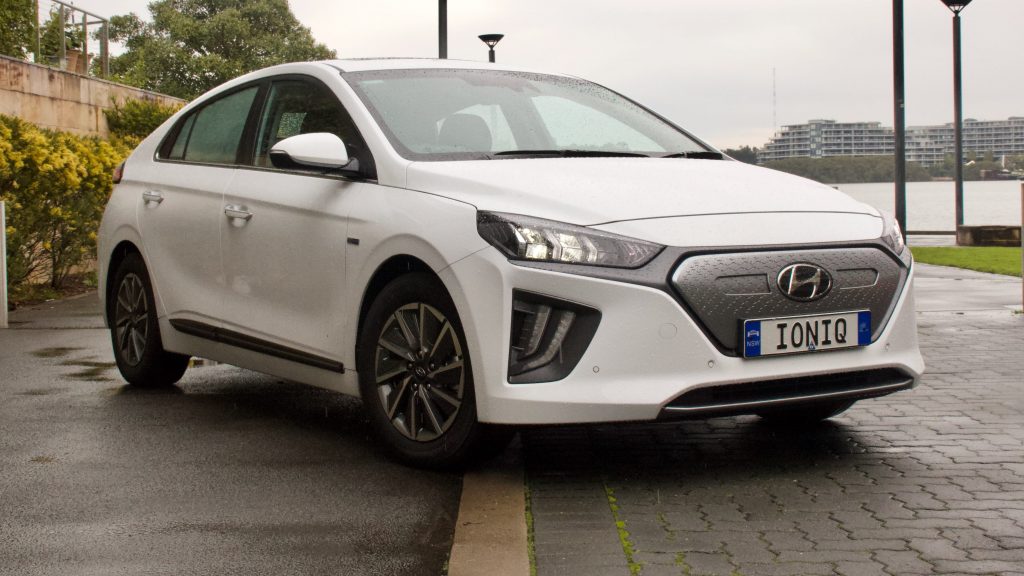
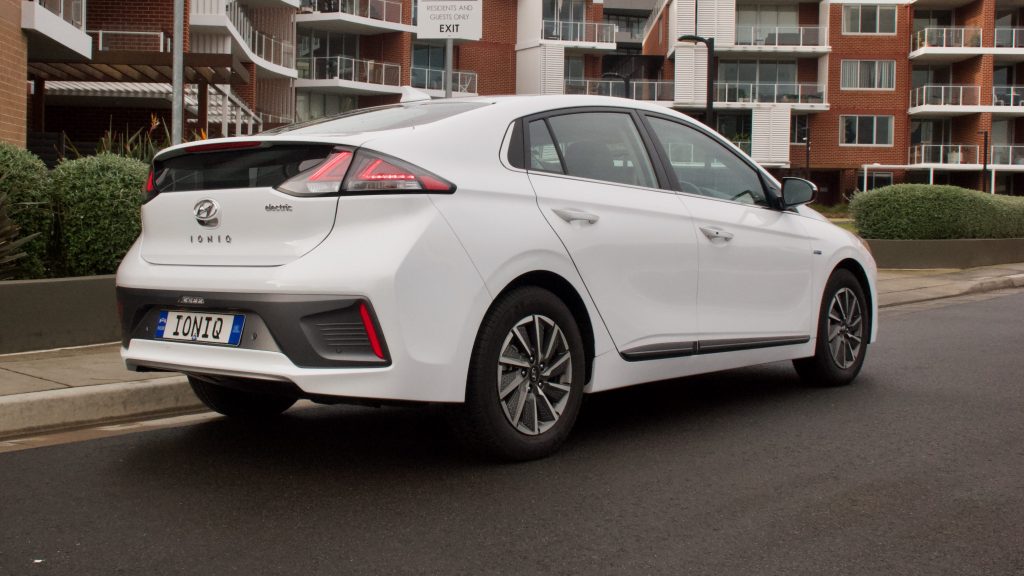
Safety kit in the 2020 Hyundai Ioniq Electric is plentiful – it comes as standard with low and high speed autonomous emergency braking (AEB) with pedestrian avoidance and forward collision warning, blind-spot monitoring with rear cross-traffic alert, lane departure warning with steering assist, adaptive cruise control with stop and go functionality, auto high beam and driver fatigue detection.
How does this compare to competitors? First being the Nissan Leaf, which is cheaper than the Ioniq at $49,990 but doesn’t offer the same amount of equipment and an inferior 270km range. There is also the recently introduced Mini Cooper SE, which is both smaller and more expensive than the Hyundai with less range though with more personality. Finally there’s Hyundai’s own Kona EV, which does cost more at $59,990 but offers 449km of range.
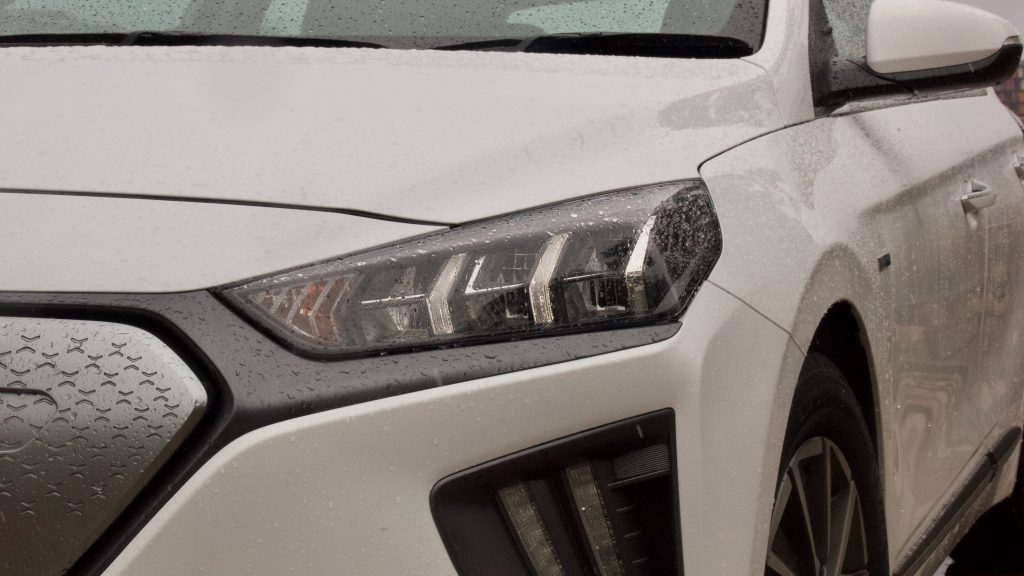
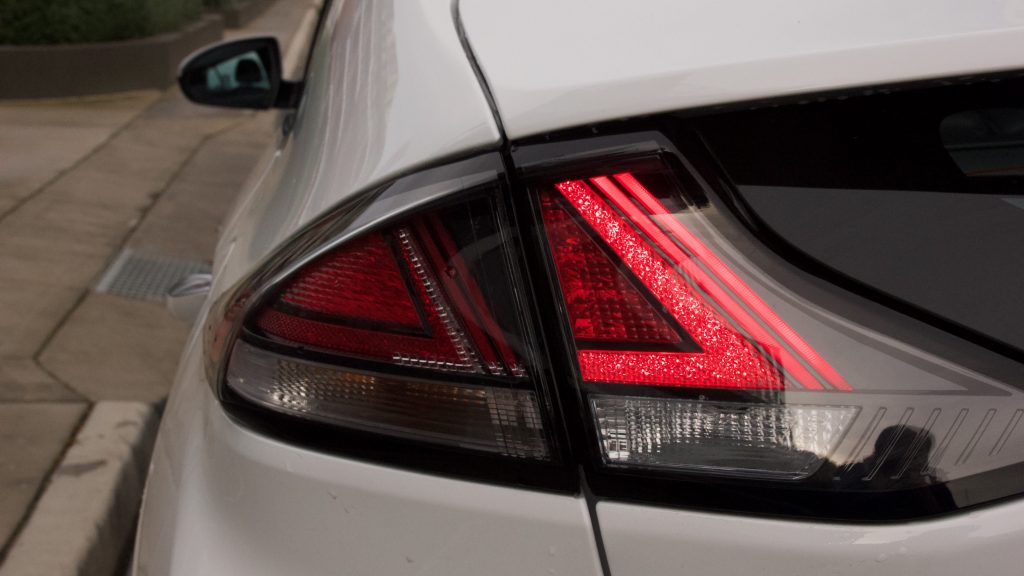
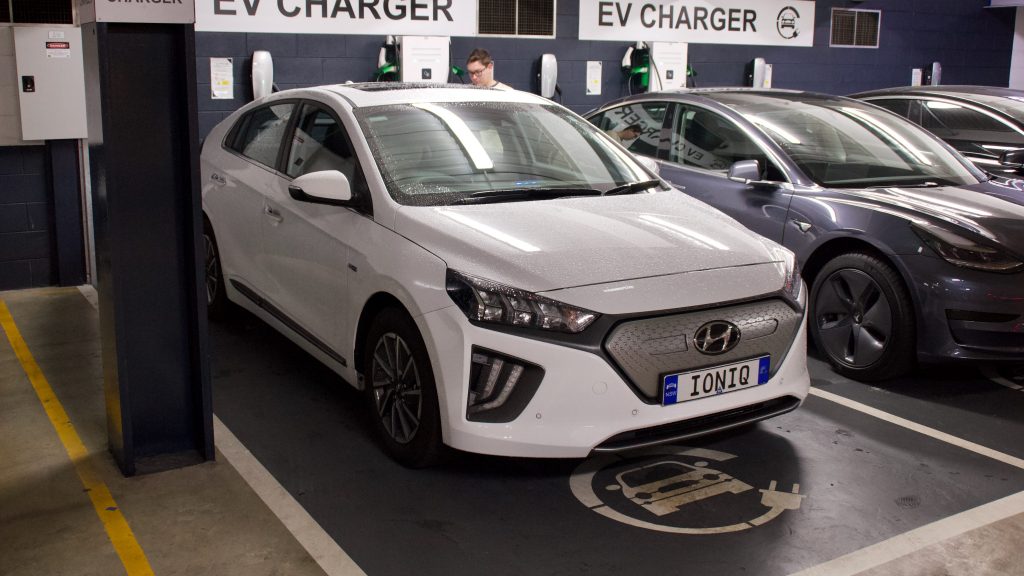
The range of colours on the 2020 Hyundai Ioniq Electric range is somewhat small, unfortunately. Our test car is painted in the standard ‘Polar White’ paint work – other colours will set buyers back a further $495 and they include ‘Intense Blue’, ‘Iron Grey’, ‘Fluid Metal’, ‘Amazon Grey’ and ‘Fiery Red’.
Engine & Drive: 8.5/10
The 2020 Hyundai Ioniq Electric is powered by a 100kW/295Nm electric motor that’s matched to a single gear transmission to distribute the power to the front wheels. The power for the motor comes from a 38.3kWh lithium polymer battery pack – a significant upgrade from the 28kWh battery pack in the 2019 Ioniq.
The instant torque of the electric motor is definitely something that needs some time to get used to and the regenerative braking system can be difficult to modulate, but after some time behind the wheel of the Ioniq, we had it all down packed and it felt remarkably like a regular car – which is entirely the point of this car. It’s so incredibly easy to drive.
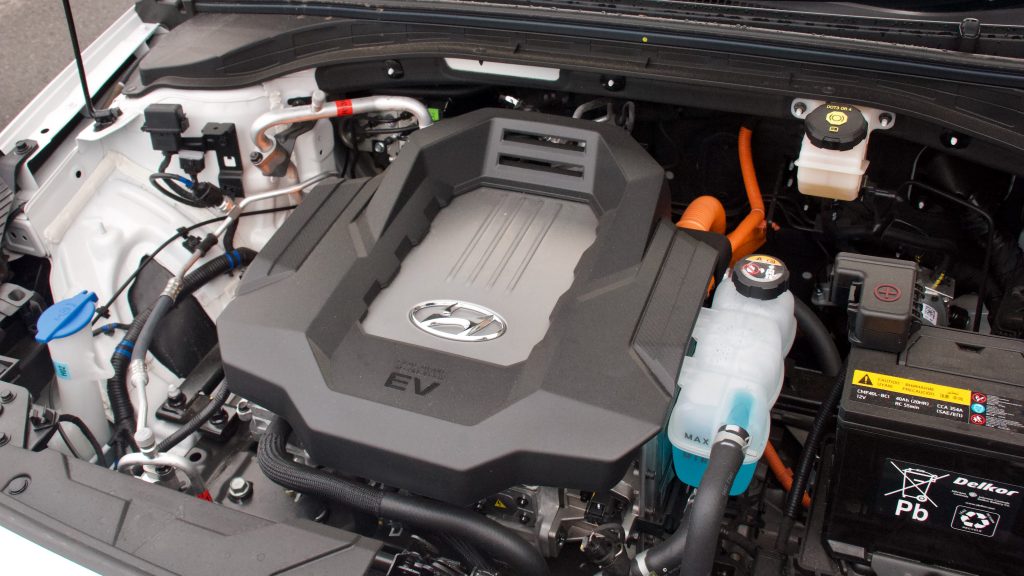
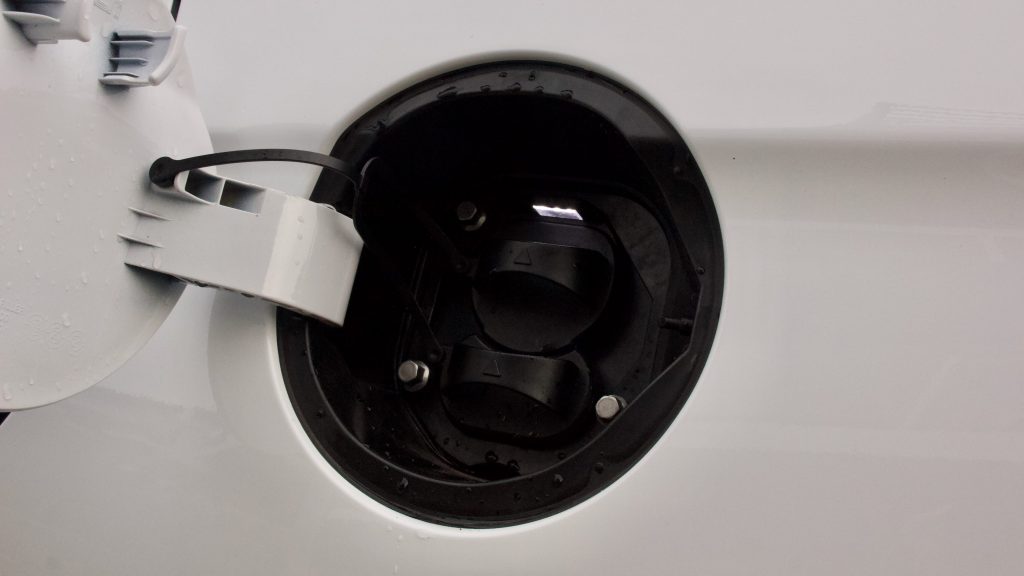
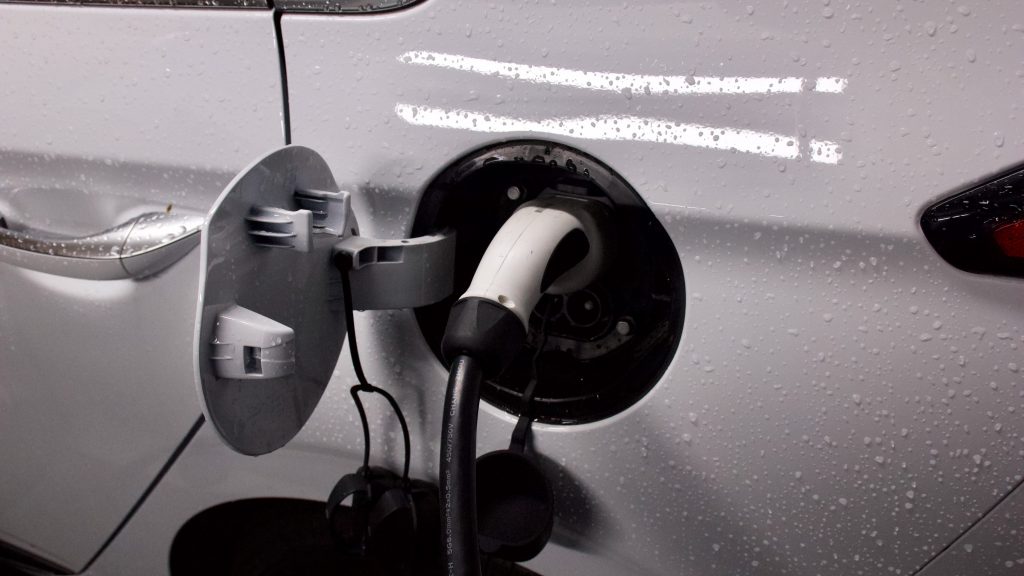
Hyundai claims a possible range of up to 311km and we managed to travel around 280km in our time with it – that’s a big increase on the 200km range of the pre-updated model. Places to charge the car are growing with a number of shopping centres offering electric car charging, which means that you can charge your car while enjoying some retail therapy.
Using a 100kW DC fast charger, the 2020 Hyundai Ioniq can be charged to 80 per cent (or around 250km of range) in as little as 54 minutes. Using a standard wall socket can take an agonising 18 hours, though Hyundai offers a $1,995 7.2kW wall box as an accessory, which reduces charging time to a much more reasonable six hours.
Unlike other electric cars as well, the Ioniq can be had in either regular hybrid (like a Toyota Prius) or plug-in hybrid (like a Mitsubishi Outlander PHEV) forms and for a lot less money – the hybrid starts at $34,790 and the PHEV from $41,990. Both these options significantly reduce your automotive operating costs, though only the plug-in hybrid can be charged and used purely electrically (in this case, up to 63km).
Ride & Handling: 7.5/10
Like the rest of the Hyundai range, the Ioniq Electric is tuned for Australian tastes and it shows: this is a car that drives quite well. You can never escape the feeling that it’s a heavy beast due to the battery packs, but it’s agile enough, and the ride quality is well tuned. The steering also feels more natural than other electric vehicles.
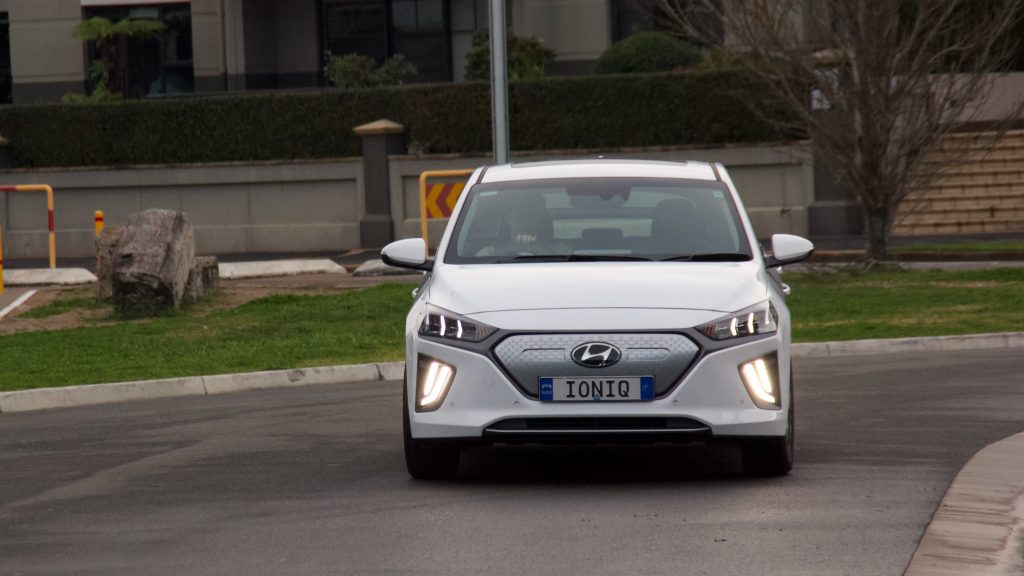
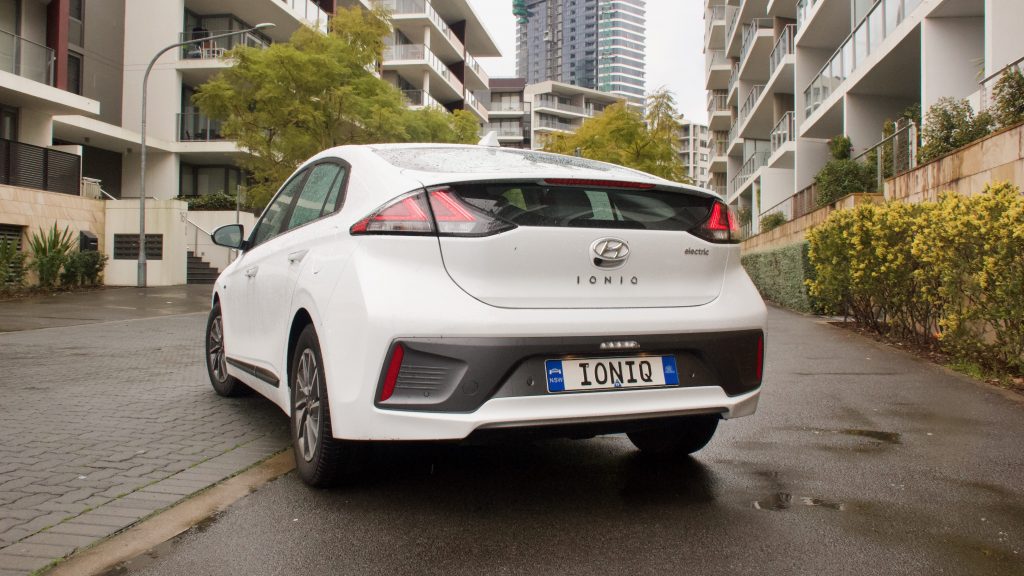
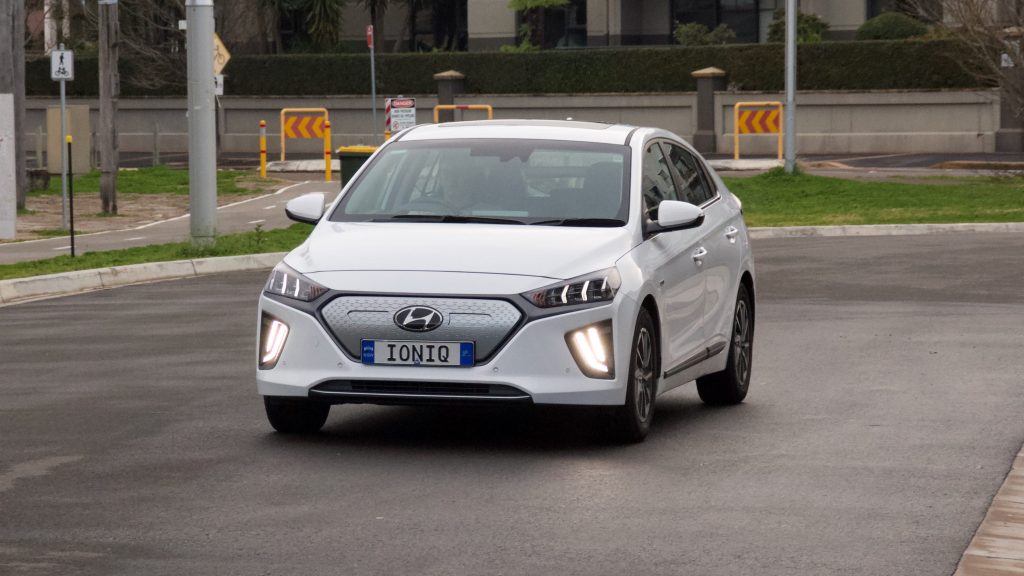
At speed, road noise levels are pleasingly low, and the Ioniq cruises with ease. Its visibility is excellent thanks to large windows and mirrors, though the split rear window can take a while to get used to. At slow speeds the ride is supple and bumps glide away under the Ioniq Premium’s standard 16-inch wheels.
The Ioniq Electric feels better to drive than its hybrid and plug-in hybrid (remember, the Ioniq is available with in three different drivetrains) thanks to its battery pack being mounted low in the floor. Because the centre of gravity is lower, its handling is more natural and the ride quality is more controlled.
Interior & Practicality: 7.5/10
If there’s an area where the Ioniq needed improvement, it’s inside. Thankfully, the recent mid-life update of the car gave it a new dashboard with a new screen, ambient lighting and materials. Everything is well made and it feels built to last, there are cubbies everywhere and the host of screens available for the driver make the cabin feel unlike any other.
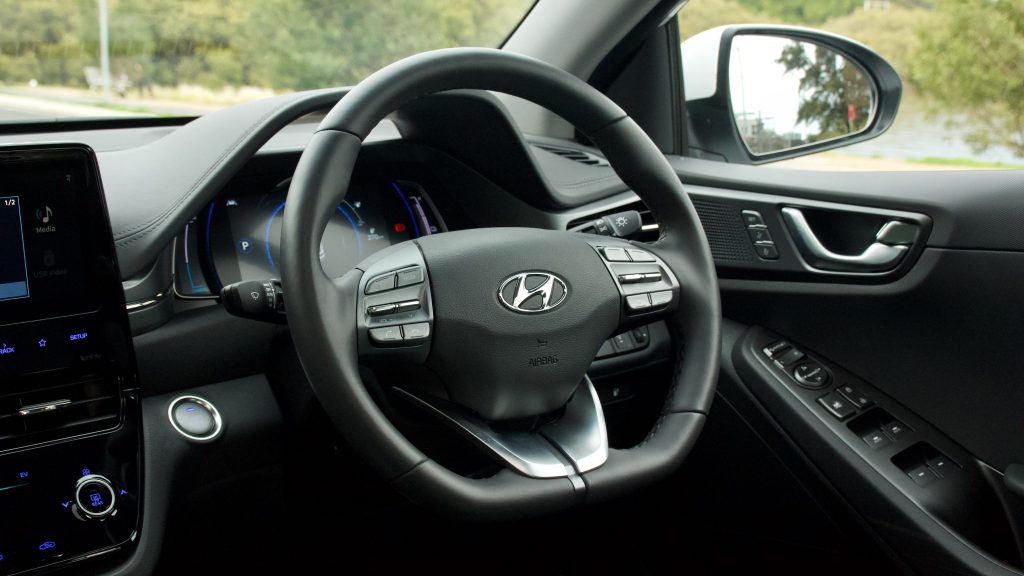
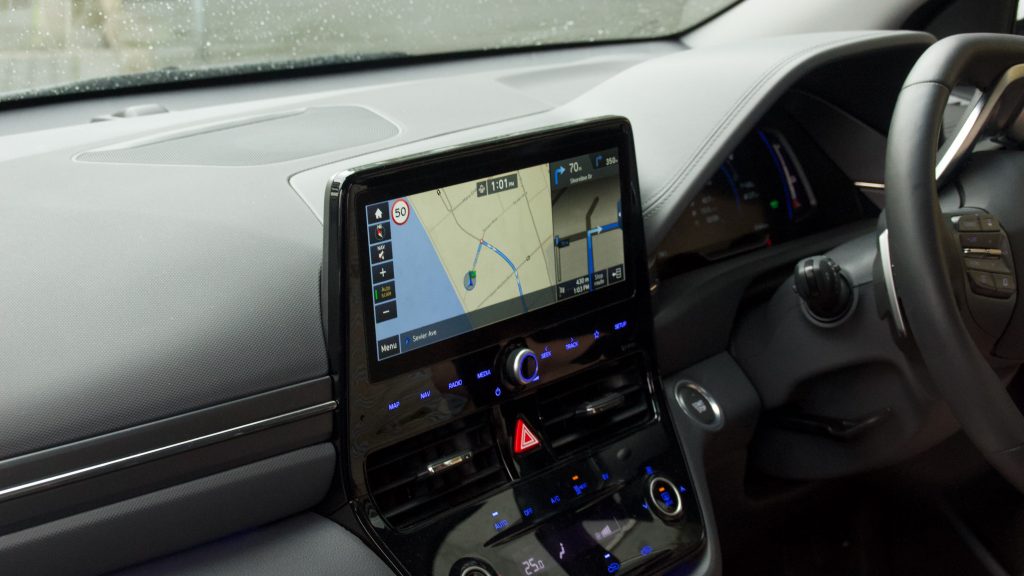
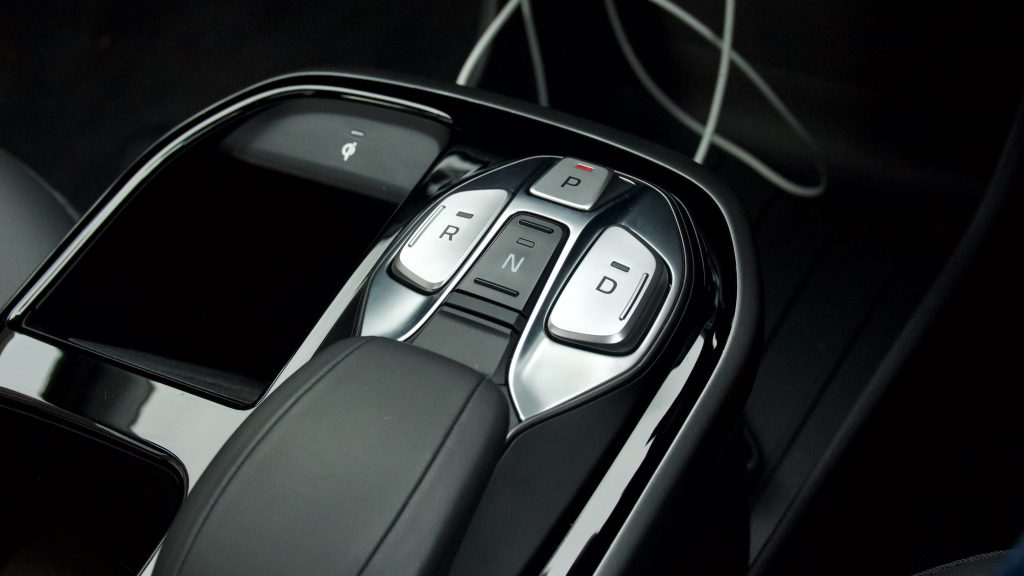
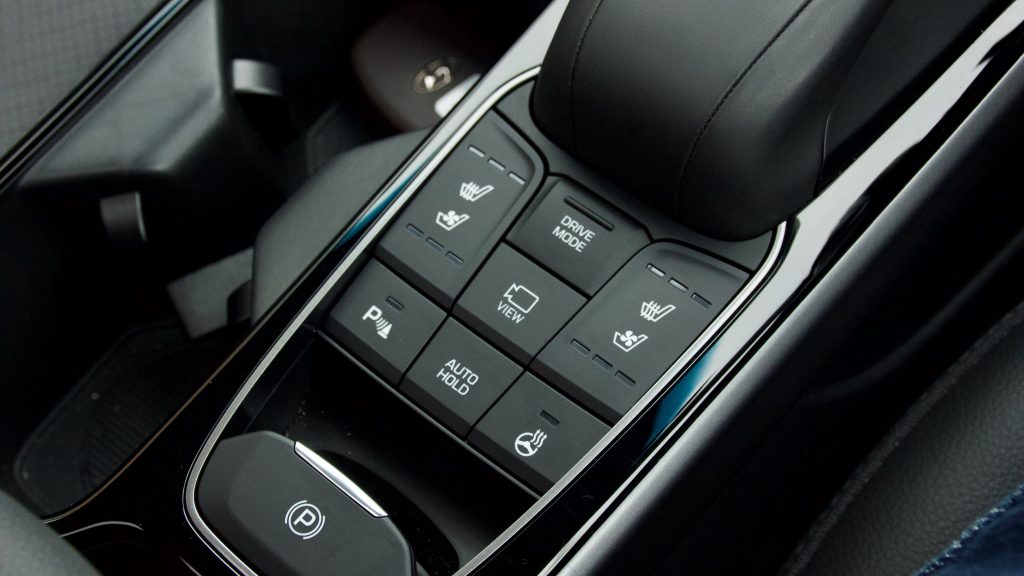
The new 10.25-inch infotainment system is a breeze to use, and while it does feature inbuilt nav, it does have Apple CarPlay and Android Auto smartphone mirroring as well. It’s also got digital radio, and it’s one of the easiest systems on the new car market regardless of price – thankfully it’s going to spread further across the Hyundai range, including the facelifted Kona.
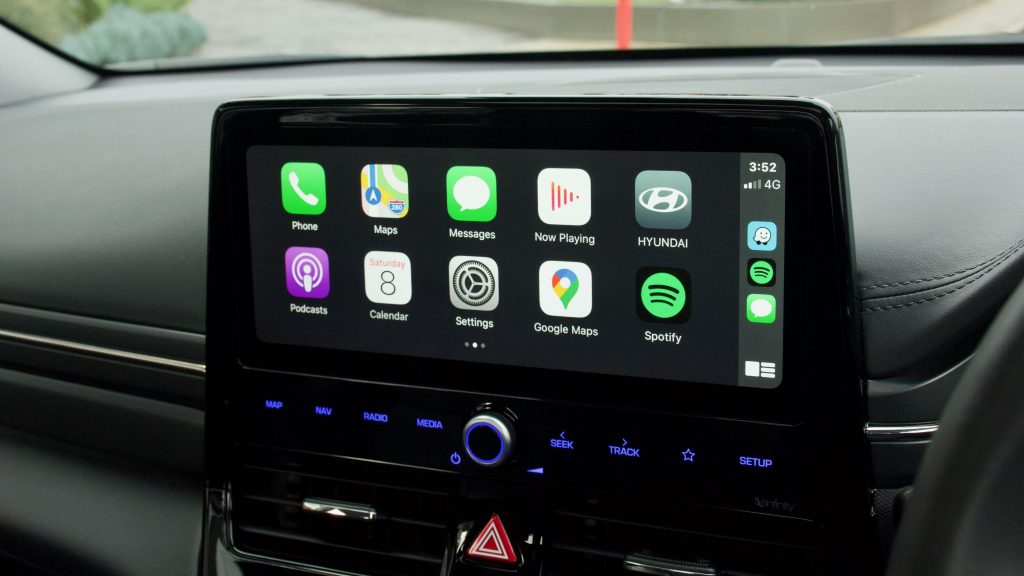
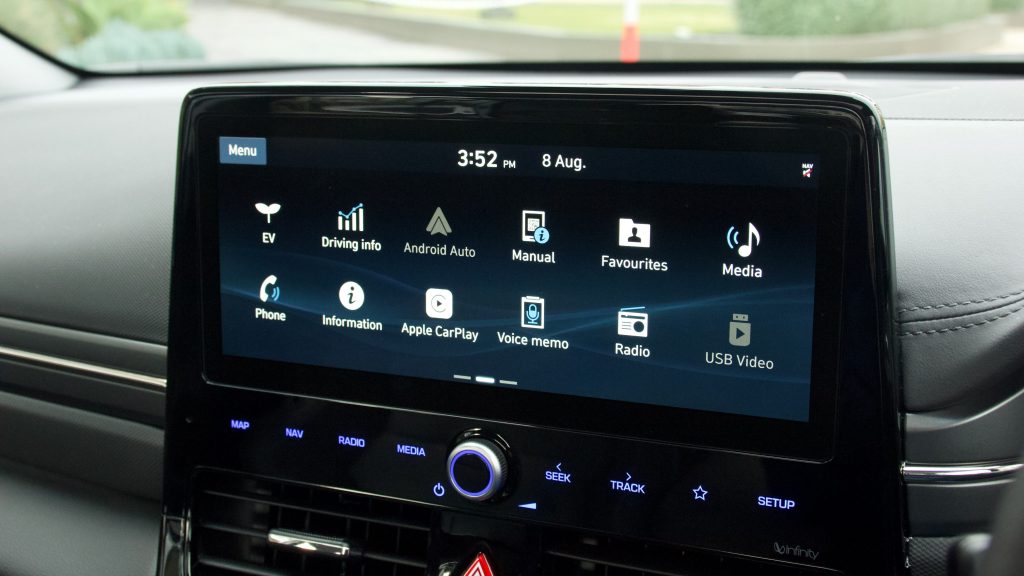
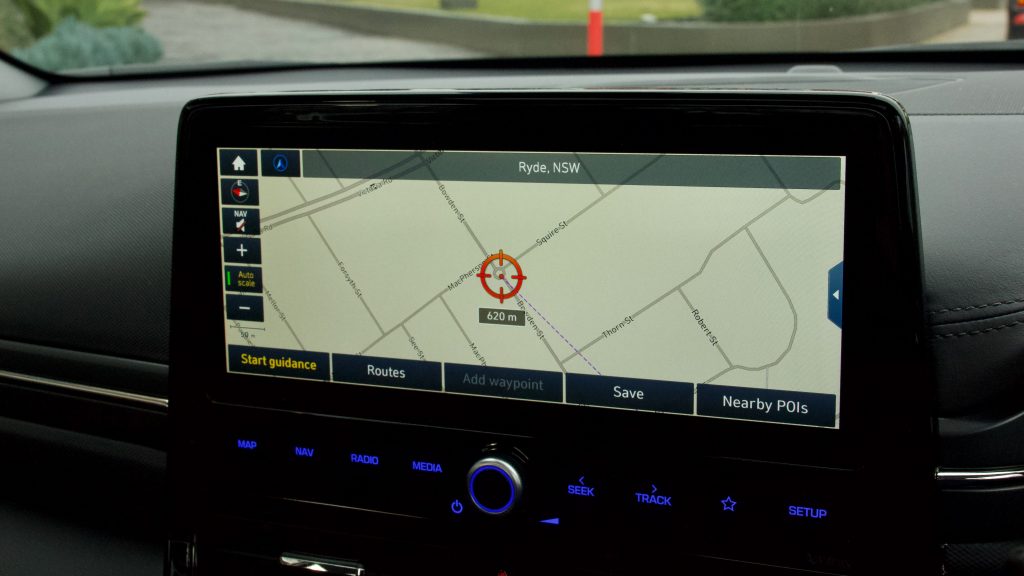
The front seats are rather flat, though they are reasonably comfortable. The quality of leather is reasonable too, though don’t expect Audi or even Mazda levels of quality here.
It’s a spacious cabin, with more than ample room for four adults – five will fit at a pinch, too – though rear headroom is not brilliant. The rear seat does feature amenities such as a centre armrest with cupholders and air vents though we would like to see rear charging ports.
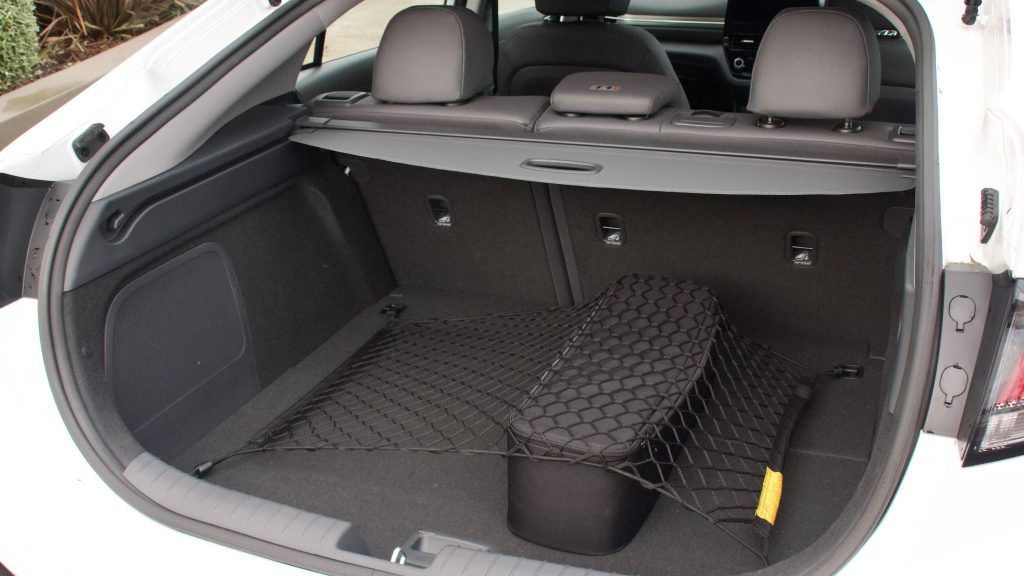
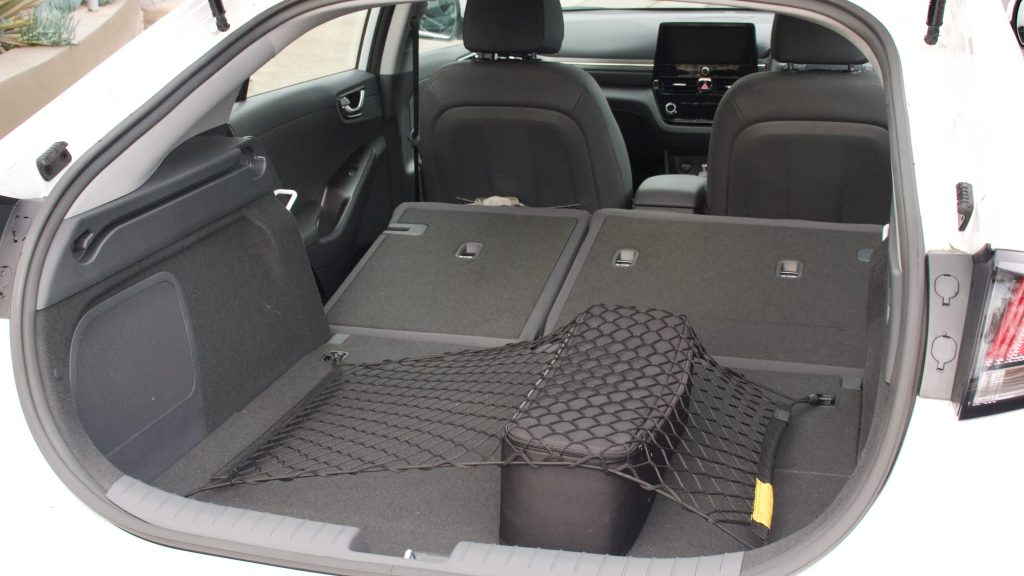
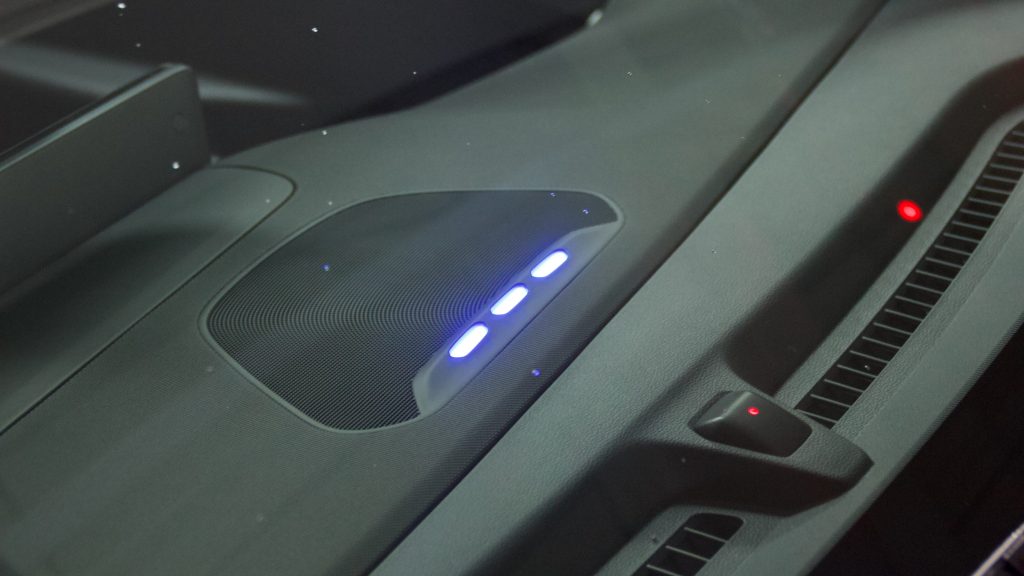
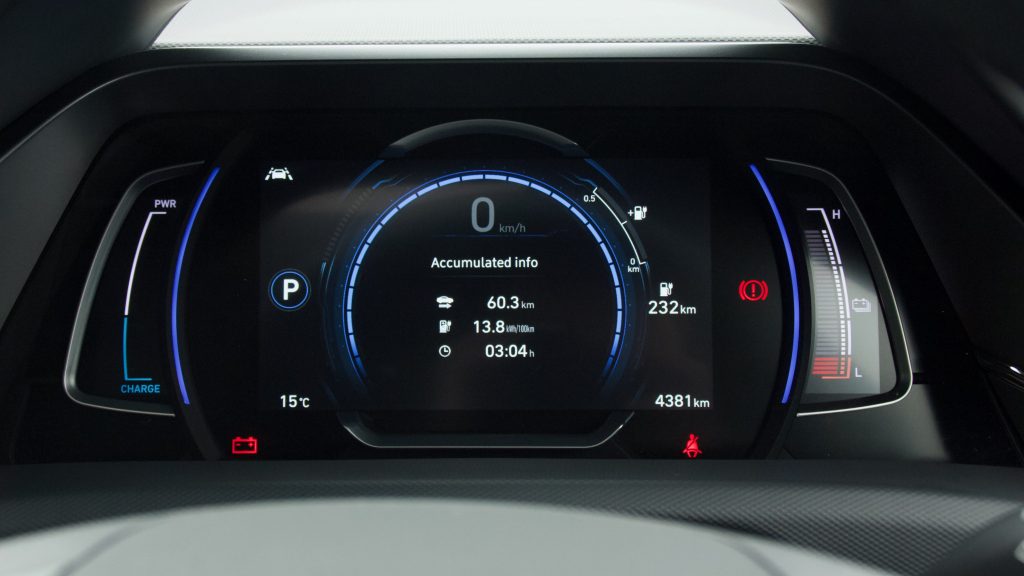
The boot is reasonable at 357-litres – the Nissan Leaf’s boot is 405L but the Ioniq features a much larger opening thanks to its liftback design. There is under floor storage though no spare wheel. Seats folded, 1,417-litres of space is available – the Leaf can only muster 1,176-litres.
Running Costs & Warranty: 9.0/10
Like all other Hyundais in Australia, the Ioniq comes with a five-year/unlimited km warranty. This also includes one year of roadside assistance, which is topped up by 12 months at every service up to eight years in total. Servicing intervals are once yearly/every 15,000km, whichever comes first. The batteries for the Ioniq however are covered by an eight-year/165,000km high voltage warranty, and while this is good, Toyota cover their hybrid’s batteries for 10-years.
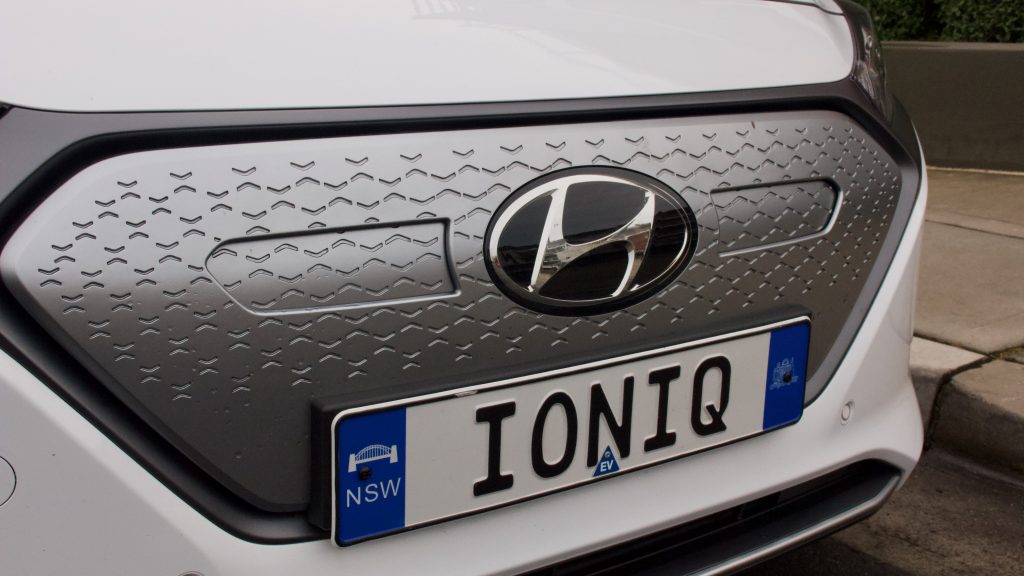
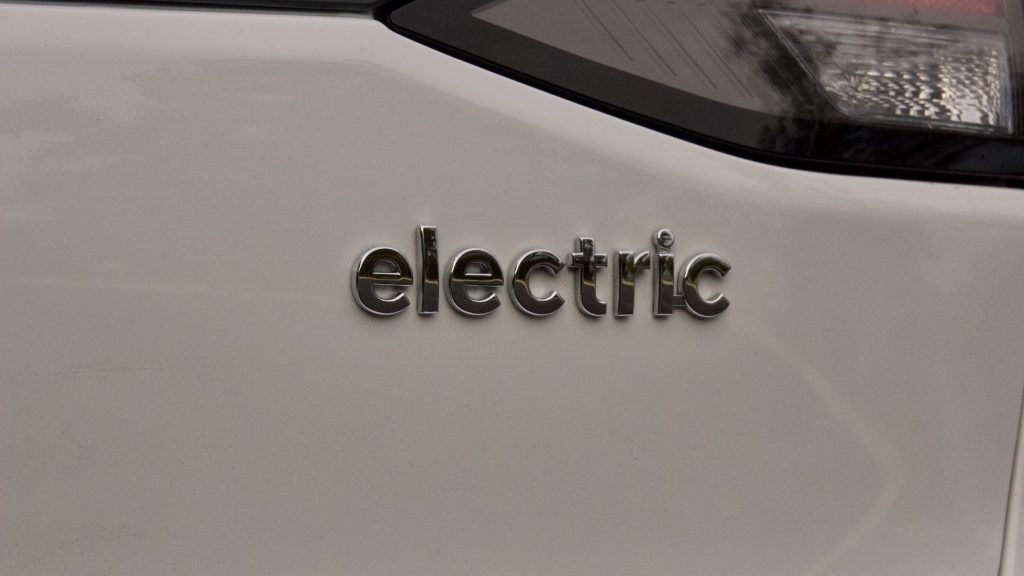
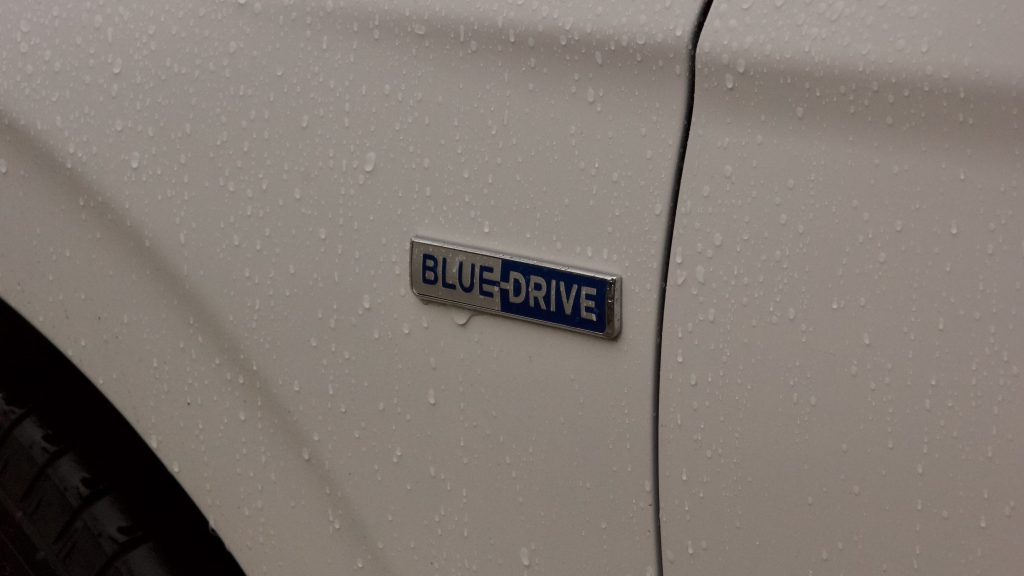
Servicing the Ioniq is cheaper than you may expect – over five years it costs just $800, which is $160 per service. A Nissan Leaf costs $1,388 (an average of $277.60 per service) over the same time period, though it has larger 20,000km intervals (384km per week), which is something to keep in mind if you travel above average distances.
2020 Hyundai Ioniq Electric Premium DiscoverAuto Rating: 8.1/10
Overall, the 2020 Hyundai Ioniq Electric is an excellent first step into electric car ownership. Once you’ve paid its not entirely unreasonable (remember, there’s no government incentive in Australia at the time of writing) cost of entry, you’re greeted by an entirely normal driving experience with a good driving range, performance, quality and value for money. It’s an entirely easy car to recommend, though we’d definitely check out Hyundai’s own Kona Electric, which costs more money but has 150km more range.
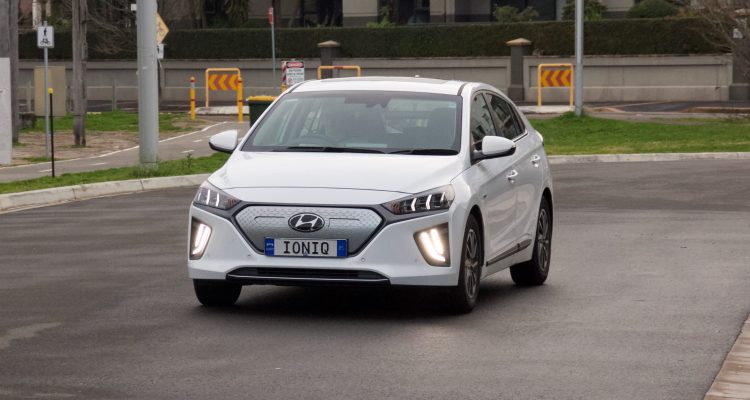
Leave a Reply